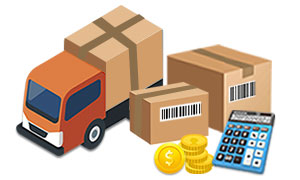Reduce Last Mile Delivery Cost in Your Business
Nowadays, Ecommerce Business is growing at a rapid phase and if the sellers want to make their business successful, then it is very necessary that their delivery services should be efficient that can be achieved by lowering the last-mile shipment costs.
Last Mile Delivery
End Mile Delivery is a process that involves the transfer of products or goods from the warehouses to the customer’s residence. This is the most important step in the delivery process, and businesses want to make sure everything goes as smoothly as possible.
It is essential for creating brand loyalty, which can help businesses to grab a major share of the market. Most ecommerce businesses send their packages to a third-party logistics provider that delivers them to their clients. It is essential to select the correct courier partner to ensure successful last-leg shipment.
Costs Involved in End Mile Delivery
Due to increasing delivery difficulties, logistics businesses are seeing an increase in end-mile shipment costs. There are some following costs that associated with last-mile delivery.
-
Fuel Cost
As you grow and expand into new markets, your fuel prices will rise. You'll have to cover more area, as your delivery network gets larger which will require more fuel. Fuel expenses are also important because they are volatile.
-
Labour Cost
Labour costs are one of the most significant expenses. It accounts for roughly half to two-thirds of the overall cost of last-mile delivery. Delivery truck drivers are most expensive, as they are an essential part of the logistics network.
-
Maintenance Cost
The efficiency of vehicles are evaluated by the maintenance costs. Long distance travel or constant running can cause burden on the automotive engines. Increased maintenance expenses result in higher end-mile delivery costs.
-
Storage Cost
Last-mile shipping businesses, particularly those in the healthcare, food, and grocery industries suffer storage utilization costs. Some drivers waste lots of space in their delivery truck, resulting in increased fuel and labor cost.
-
Delivery Equipment Cost
There are some deliveries require particular arrangements, such as a vaccination that will expire if the temperature exceeds a certain level. End-mile delivery services can be quite costly if such type of equipment is used.
-
Reverse Logistics Cost
Reverse logistics costs are involved when customers decide to return the products they have received. Customers repackage items and return them to the shipping provider. The total cost of the return process could be very expensive.
Parameters that affect Last Leg Delivery Costs
-
Same day Delivery
There are lots of consumers demand rapid shipping, as well as same-day product delivery, which puts business under pressure to optimize delivery routes and simplify various activities, which might result in increased various costs.
-
Failed Deliveries
Last-mile delivery costs rise due to failed deliveries. It has an impact on travel distance and expenses. Some products demand extra attention, handling, and security. The cost of a failed delivery in these types of goods is higher.
-
Free Shipping
During online retail purchasing, every customer wants products with free shipping delivery. Managing on-time deliveries at minimal transportation costs is difficult for businesses. Free shipping costs put further burden on them.
-
Unpredictable Deliveries
Last-mile deliveries are made more unpredictable by sudden changes in routes, maintenance, or traffic congestion. This unpredictability might result in increased delivery delays and raising the cost of your last-mile logistics operation.
How to Reduce Last Leg Shipment Cost in your Business
In ecommerce businesses, last leg delivery is the most costly part of the delivery process when implemented properly can save a lot of time, money and also optimize carrier operations. There are some factors that help you to reduce last-mile shipment costs in your business.
-
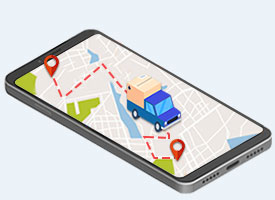
Utilize Route Optimization
The technique of selecting the most cost-effective route while enabling the most delivery places is known as route optimization. Companies must consider the factors such as fuel costs, driver efficiency, and delivery necessity etc. to determine an efficient route.
-

Enhance Customer Experience
You can enhance consumer experience by providing real-time package updates. It can reduce your last-leg delivery costs because if consumer knows when and where his product will arrive, he'll be prepared to accept it which reduces the amount of failed deliveries.
-
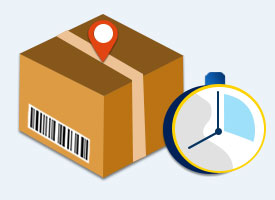
Automate Dispatch Process
With auto-dispatch technology, you can send the right driver to the right place at the right time. It helps your business in adjusting work limitations so that one driver is not assigned to too many deliveries. It saves time and labor costs in final-mile delivery.
-
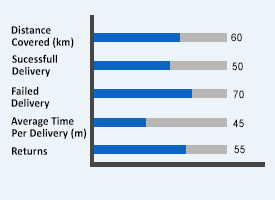
Real Time Data Updates
Real-time data is a valuable asset for your business. Data analysis allows you to see what is going on in the last-mile shipment. It helps you in taking the steps necessary to decrease inefficiencies. You can analyze data like distance covered, delayed deliveries, etc.
-
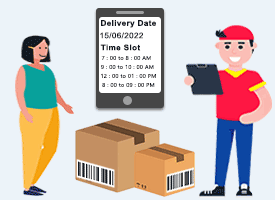
Offer More Delivery Options
Multiple delivery options improve consumer satisfaction and minimizing last-mile delivery costs. Many consumers want convenient time slots than faster shipment. They will be able to quickly select their preferred shipping method that reduce the repeated deliveries.
